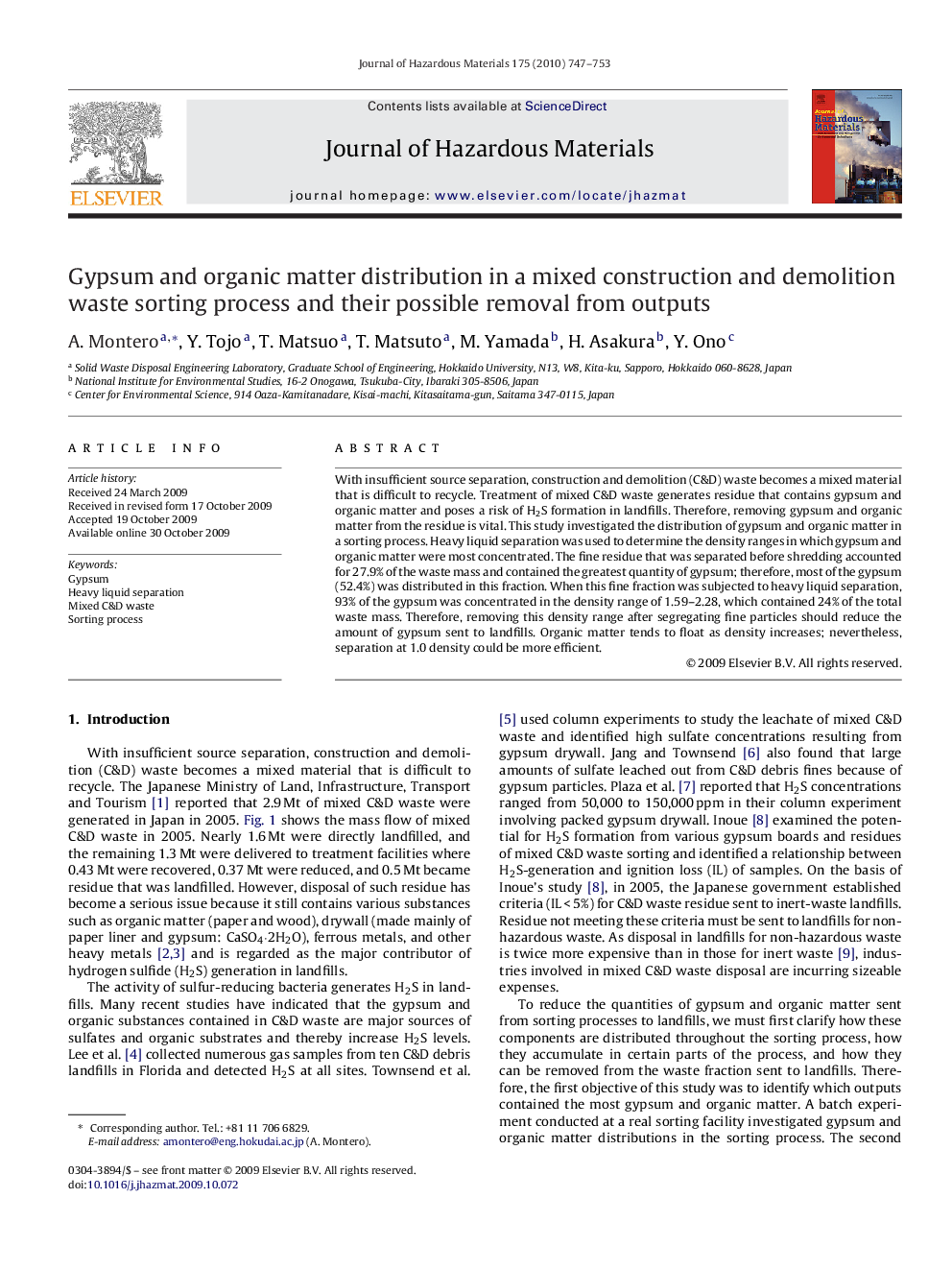| Article ID | Journal | Published Year | Pages | File Type |
|---|---|---|---|---|
| 580520 | Journal of Hazardous Materials | 2010 | 7 Pages |
Abstract
With insufficient source separation, construction and demolition (C&D) waste becomes a mixed material that is difficult to recycle. Treatment of mixed C&D waste generates residue that contains gypsum and organic matter and poses a risk of H2S formation in landfills. Therefore, removing gypsum and organic matter from the residue is vital. This study investigated the distribution of gypsum and organic matter in a sorting process. Heavy liquid separation was used to determine the density ranges in which gypsum and organic matter were most concentrated. The fine residue that was separated before shredding accounted for 27.9% of the waste mass and contained the greatest quantity of gypsum; therefore, most of the gypsum (52.4%) was distributed in this fraction. When this fine fraction was subjected to heavy liquid separation, 93% of the gypsum was concentrated in the density range of 1.59-2.28, which contained 24% of the total waste mass. Therefore, removing this density range after segregating fine particles should reduce the amount of gypsum sent to landfills. Organic matter tends to float as density increases; nevertheless, separation at 1.0 density could be more efficient.
Keywords
Related Topics
Physical Sciences and Engineering
Chemical Engineering
Chemical Health and Safety
Authors
A. Montero, Y. Tojo, T. Matsuo, T. Matsuto, M. Yamada, H. Asakura, Y. Ono,
